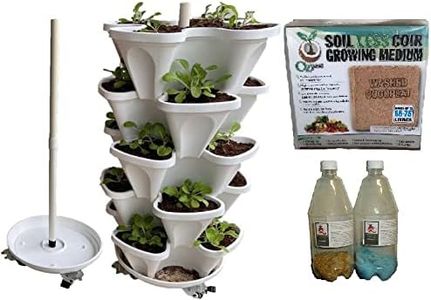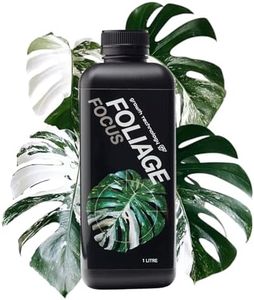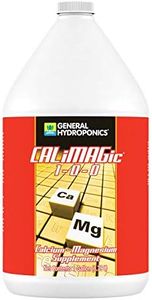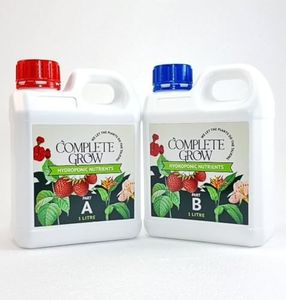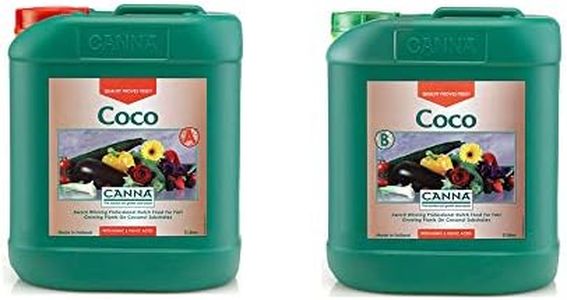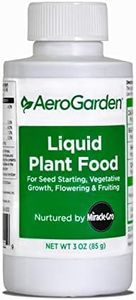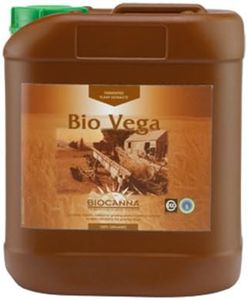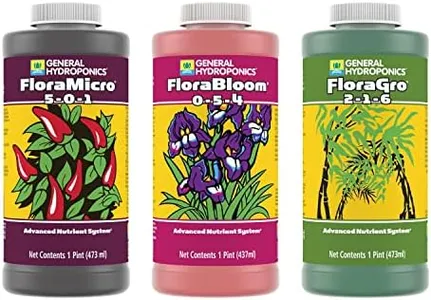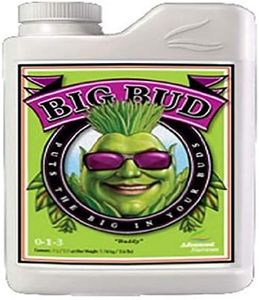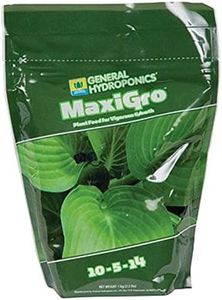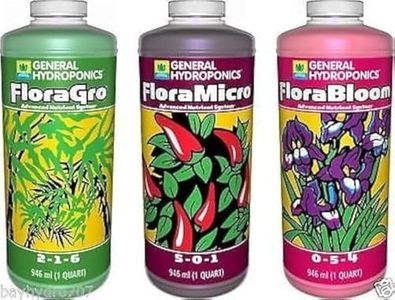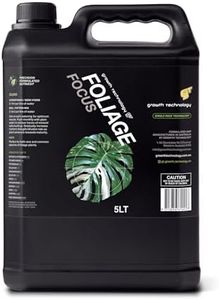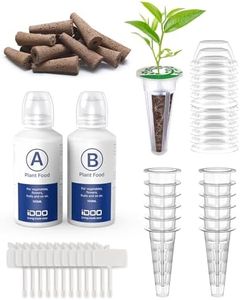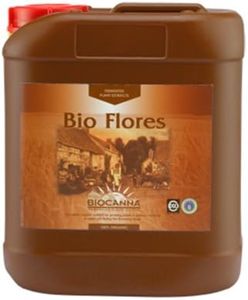We Use CookiesWe use cookies to enhance the security, performance,
functionality and for analytical and promotional activities. By continuing to browse this site you
are agreeing to our privacy policy
10 Best Hydroponic Nutrients
From leading brands and best sellers available on the web.Buying Guide for the Best Hydroponic Nutrients
When shopping for hydroponic nutrients, it's important to understand that these products provide the essential minerals and elements your plants need since they're not getting nutrients from soil. Picking the right nutrient mix results in healthier, faster-growing plants and better yields. Your ideal pick should suit both the type of plants you’re growing and your chosen hydroponic system. Carefully read product labels and learn about each component so you can match them to your plant's stage and specific requirements.NPK RatioThe NPK ratio stands for Nitrogen (N), Phosphorus (P), and Potassium (K) – the primary nutrients plants need. This ratio tells you the percentage of each ingredient in the mix. Balanced, higher-nitrogen blends are ideal for leafy greens and the vegetative stage of growth, while more phosphorus and potassium support flowering and fruiting. If you’re growing different crops or moving plants from growth to bloom, choose a nutrient mix where the NPK supports your current plant stage and type. Beginners can start with a balanced formula unless they have specialized needs.
MicronutrientsApart from NPK, plants require smaller amounts of essential elements like calcium, magnesium, iron, and others for healthy development. Sometimes, hydroponic mixes are labeled 'complete' (including micronutrients), while others need you to add these separately. To avoid deficiencies and keep plant health optimal, make sure the nutrient product provides a full spectrum of micronutrients, especially if you’re growing fruiting or flowering plants which might have higher demands.
Form (Liquid vs. Powder)Hydroponic nutrients come mainly in liquid or powder form. Liquids are convenient and easy to measure out and mix, making them beginner-friendly. Powders tend to be more concentrated and cost-effective but require accurate measuring and mixing. If you’re new to hydroponics, a liquid version can help avoid mistakes, while more experienced growers or those with large systems might prefer powders for their value and flexibility.
pH StabilityThe pH level determines how well plants absorb nutrients. Some nutrient mixes are formulated to help keep your hydroponic solution's pH more stable. If your water source tends to swing in pH, or you want to save time on monitoring and adjusting, selecting a nutrient mix with built-in pH stabilizers can simplify maintenance and reduce plant stress.
Single-Part vs. Multi-Part NutrientsSingle-part nutrients combine everything in one bottle and are simple for beginners or small setups. Multi-part nutrients offer separate bottles or packets, usually for different plant stages or needs, allowing for more customization and control. If you want ease and have general plant needs, a single-part formula is fine. For advanced growers, especially with diverse crops, multi-part systems can let you optimize nutrition at every stage.
